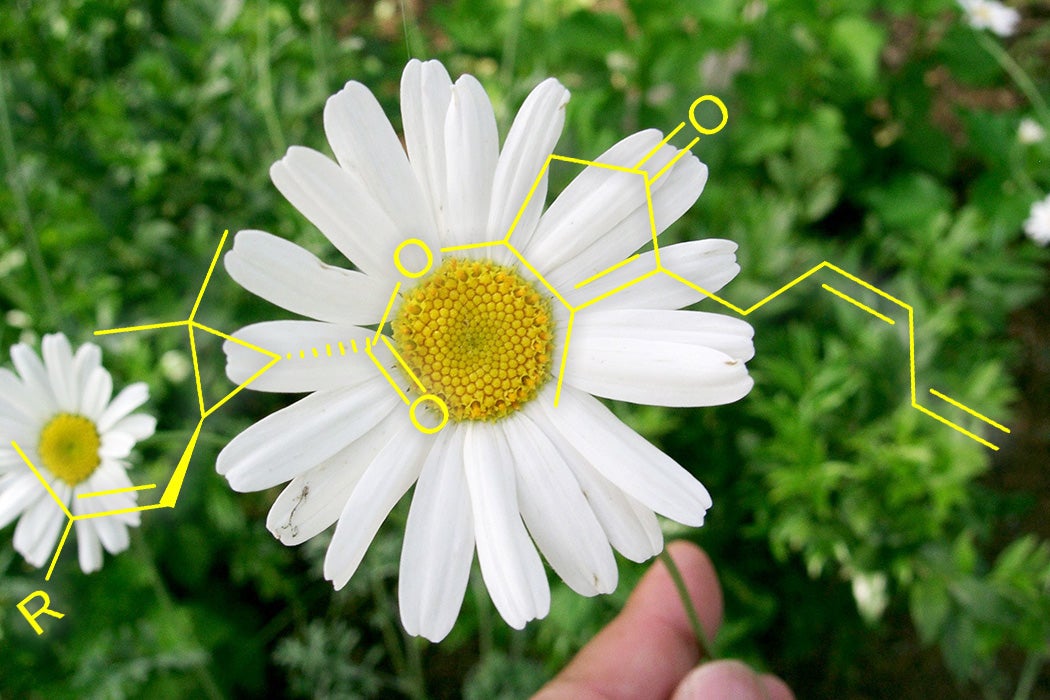Welcome to JSTOR Daily’s Detox Series, in which we consider how we can limit our exposure to substances scientists deem unsafe. So far we’ve covered fire retardants in milk, plastic in our water, chemicals in our plastic and digital detox. Today we trace the origins of lice-killing shampoos to ancient Persia.
In the past few years, schools across the country have been battling an invasion of head lice. In 2017, over 100 children were found to have lice in Harrisburg, Pennsylvania, which the school district has called “unprecedented.” And in 2019 a school in Sheepshead Bay section of Brooklyn school reported an epidemic. While the Centers for Disease Control and Prevention generally does not consider lice a health hazard, they can be a major nuisance. Getting rid of lice and nits—their tiny eggs—requires washing one’s head with shampoos containing insecticides.
The insect-killing ingredients present in many over the counter shampoos contain a compound called pyrethrum or pyrethrins. That compound is found in flowers—Tanacetum cinerariifolium, Pyrethrum cinerariifolium, and Chrysanthemum cinerariifolium—more commonly known as chrysanthemums or mums. The plants naturally contain six different esters or pyrethrins—organic compounds that are toxic to insects.
People have noticed these flowers had insecticidal qualities hundreds of years ago. In the early 1800’s pyrethrum flowers were used in Persia to get rid of body lice. The flowers were first grown commercially in Armenia in 1828 and about a decade later in Dalmatia (today’s Croatia), where production continued until World War I. The plants did well in warmer climates. In the 1980s, pyrethrum production was estimated at about 15,000 tons of dried flowers per year and more than half of it came from Kenya, the rest from Tanzania, Rwanda and Ecuador. About 200,000 people worldwide were involved in its production. The flowers were handpicked, dried under the sun or mechanically and then ground into powder. Each flower contained about three to four milligrams of pyrethrins–one to two percent by weight, yielding about 150 to 200 tons of the insecticide a year. The United States started importing the powder in 1860—domestic commercial production efforts were unsuccessful.
Early on, pyrethrum was used as a powder. But beginning in the early 19th century, it was mixed with kerosene, hexane, or similar solvents to make liquid sprays, which were more effective than the powders. Later, various synthetic analogs were developed. These were called pyrethroids—manufactured chemicals similar in structure to pyrethrins, but more toxic to insects—and mammals as well. In the 1980s, four pyrethroids were used to protect crops—permethrin, cypermethrin, decamethrin, and fenvalerate. These newer compounds had a stronger effect and lasted longer—and therefore could persist in the environment, crops and even in eggs or milk. More than 1,000 synthetic pyrethroids have been developed, but less than a dozen of them are currently used in the United States. Pyrethrins and pyrethroids are often combined with other chemicals that prevent them from decomposing, and enhances their killing power.
Until recently, pyrethroids were considered to be reasonably safe for humans. In particular, three pyrethroid compounds—deltamethrin, alpha-cypermethrin and permethrin are recommended to control insects at home.
Weekly Newsletter
But recent studies found that pyrethroids aren’t without dangers either. Even though they are 2250 times more toxic to insects than to vertebrates, they can have detrimental effects on humans. When scientists from the University of Iowa examined health data from 2,000 adults to understand how the human body breaks down pyrethroids, they found that the chemicals increase the risk of cardiovascular disease threefold. Prior studies also found that prolonged exposure to pyrethroids—for example in people who packaged them—led to health problems, such as dizziness and fatigue.
Aside from those who work directly with pyrethroids, people are exposed to them mainly through food—by eating fruits and vegetables that have been sprayed or if their homes, lawns and gardens have been sprayed. Yet, today pyrethroid pesticides are the second-most commonly used class of insecticides in the world. Does that mean people should worry about washing their heads with pyrethrum-containing shampoo? A few washes are unlikely to hurt humans, but, it pays to check the ingredients on the insecticide bottles used to spray homes, gardens and mosquito-prone areas.
Support JSTOR Daily! Join our new membership program on Patreon today.







